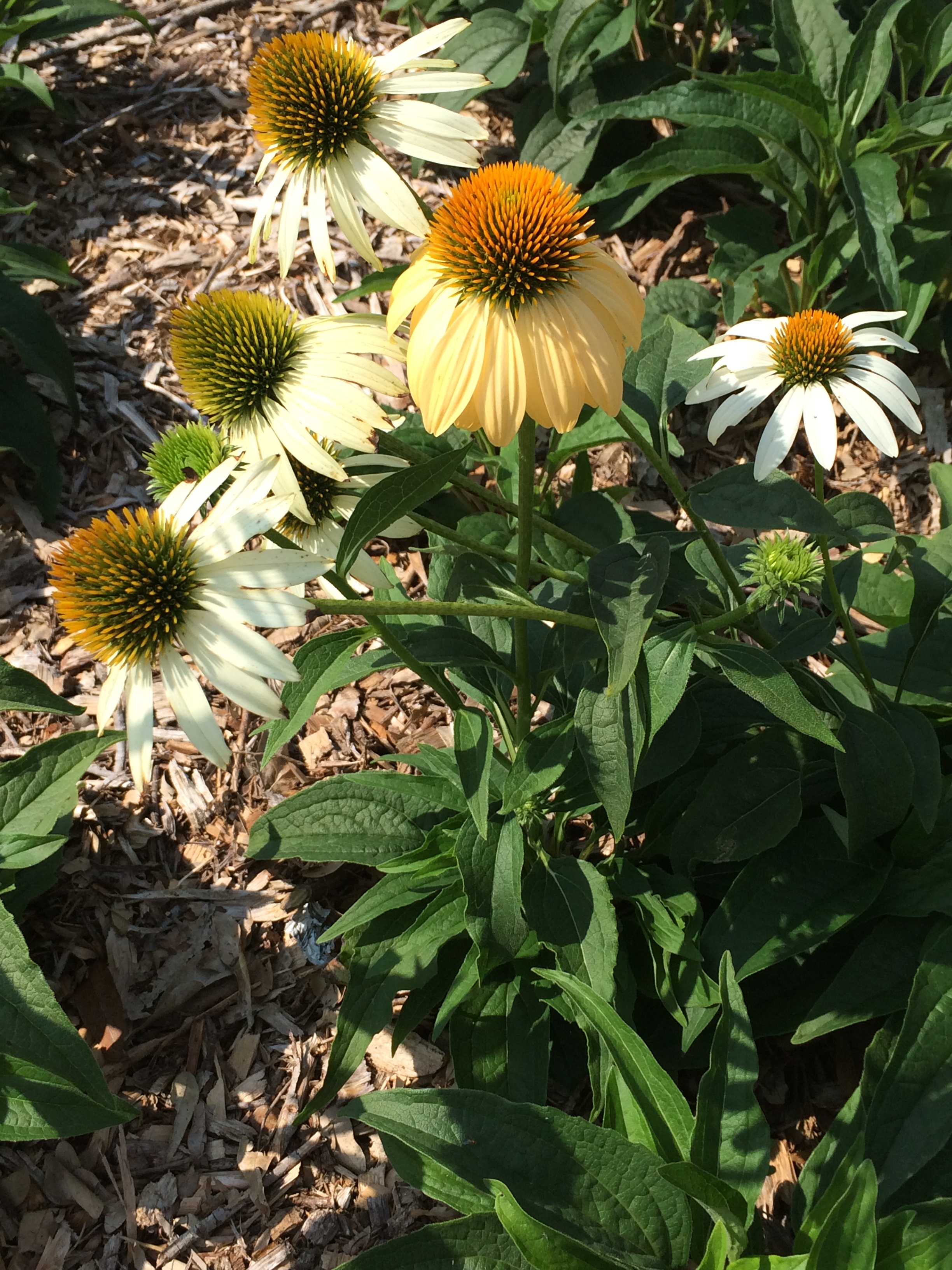
by Mary Salinas | May 12, 2015
An easy to care for perennial to add to your flower garden is the coneflower, Echinacea purpurea. The daisy-like flowers stand tall above the foliage on sturdy 2 to 4 foot stems. Blooms appear about the last part of April or the first of May in the Florida panhandle and last throughout the warm season until late fall. This Florida native reliably comes back year after year. Plant coneflower in part to full sun in rich but well-drained soil for best results.
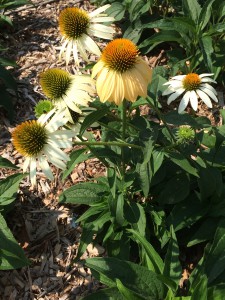
White coneflower. Photo credit: Mary Derrick, UF/IFAS Extension.
Coneflowers are traditionally purple but many new colors and variations of their form have become available from the horticultural industry. You can find them in white, yellows, pinks, oranges, and greens as well as all shades of lavender and purple. No matter what color you choose, the blooms will attract a host of butterflies and other pollinating insects. In order to protect these delicate creatures, avoid the use of pesticides when they are present.
Once you have a few coneflowers, you will notice that the clumps will grow in time and new plants will sprout from seeds left behind by the spent blooms. In our demonstration garden, this has created a stunning display that has been allowed to take over one of the garden beds. When any one clump gets too big, the number of blooms can decrease and it may be time to dig up the clump and divide it. This is a great opportunity to expand your coneflower bed or share them with some friends or neighbors!
For more information:
Ornamentals for your landscape
Butterfly Gardening
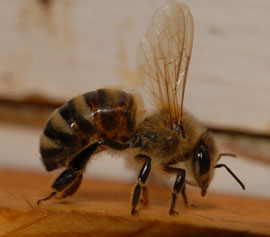
by Sheila Dunning | Apr 28, 2015
Bees have been disappearing at an alarming rate and continue to vanish without a trace. Why should anyone care? Well, they matter a lot more than most people think. Bees are the overwhelmingly dominant pollinator for most food crops. Native bees in the United States are responsible for pollinating over $15 billion worth of agricultural commodities annually. However, native bee populations are in decline due to habitat loss. At the same time, managed colonies of European honey bees have suffered a 50% decline over the past few decades. Numerous other pollinating insects are facing the same fate.

European honey bee. Photo credit: UF/IFAS.
As the spring planting season is upon us, it’s exciting to think about all the wonderful produce we will have this summer. But, without pollinators many of these crops would not be available. The majority of fruit and vegetable food sources we eat are dependent on insect pollinators. One of every three bites of food Americans consume comes from a plant visited by bees or other pollinators.
As declining numbers of farmers work to meets the need of increasing populations, they are forced to make choices on alternative to chemicals for pest control. “Good bug blends” of flowers can help attract pollinators as well as beneficial insects that suppress harmful pests. Establishment of these meadows can be done on a small or large scale and in any habitat. One approach to “bring back the pollinators” is to intercrop with blooming plants that attract insects. Selecting a diversity of plants with different flower sizes, shapes and colors, as well as various plant heights and growth habits, will encourage the greatest numbers of pollinators. It is important to provide a continuous source of pollen and nectar throughout the growing season. At minimum, strive for three species to be blooming at any one time; the greater the diversity the better.
To enhance the garden, choose flowering plants that also provide shelter for beneficial insects. Many companion plants are suitable habitat for predators and parasitoids. Research in Florida has demonstrated that predatory minute pirate bugs can build to high numbers in sunflowers. The favorite food of minute pirate bugs is Western flower thrips. So, planting sunflowers on the perimeter of vegetable crops, such as peppers, can greatly reduce the damage caused by the thrips. Similar results were found with the planting of sorghum to attract beneficial mites and intercropping with buckwheat to house syrphid flies and parasitoid wasps. The garden vegetables experienced fewer spider mite, whitefly and aphid problems. Crimson clover, Hairy vetch and cosmos are other annual seed crops that can aid in attracting pollinators and harboring beneficial insects.
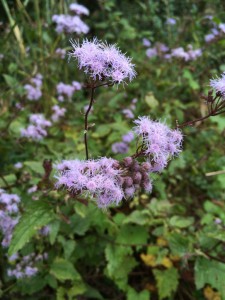
Blue Mistflower. Photo Credit Mary Derrick, UF / IFAS Extension.
Insectary meadows can be created in the landscape and along roadways, not just in the garden. For more permanently planted areas, native wildflowers, grasses and woody plants serve as larval host plants for butterflies, and also provide nesting and overwintering sites for bumble bees, predacious beetles and other beneficial insects. Native perennial wildflowers such as blanketflower, tickseed, black-eyed Susan, partridge pea, narrowleaf sunflower, milkweed, beebalm, goldenrod and silkgrass can be installed in the spring as potted plants or seeded in the fall. Seeds require exposure to cold temperatures and damp conditions before germination can occur. In Florida, the best time is November to February.
Though grasses do not offer nectar or high-quality pollen, it is often useful to include at least one native bunch grass or sedge. Short, clump-forming grasses are preferable to large, spreading grasses. Hedgerow planting of woody species is a way to provide winter-blooming plants vital for supporting pollinators. Woody plants and grasses provide more than forage for pollinators, as many native bee species nest in the stems of plants or in the undisturbed ground underneath plantings. Suitable grasses include: beaked panicgrass, purple lovegrass, Muhly grass, broomsedge,little bluestem, wiregrass and toothache grass. Favored woody species that make good “beetle banks” include: fetterbush, American beautyberry, saw palmetto, Chickasaw plum, red maple, sparkleberry, Dahoon holly, redbud, blackgum, magnolia, buttonwood and sourwood.
Regardless of whether the objective is to establish herbaceous or woody vegetation, the time and effort spent on eradicating undesirable plants prior to planting will result in higher success rates in establishing the targeted plant community. Choose level, open sites that receive full sunlight and have limited weed populations. If perennial weeds are a problem, the use of herbicides that have no soil residual (e.g. glyphosate) may be necessary.
For more information on establishing planting for pollinators visit: www.xerces.org/pollinator.
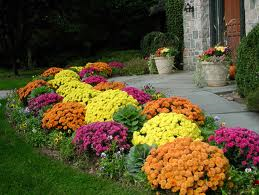
by Larry Williams | Sep 9, 2014
The Emerald Coast Home Show, Health Fair and Business Expo will include lawn and landscape seminars and an information booth hosted by the Okaloosa County Master Gardeners. This event will take place September 13 and 14 at the Emerald Coast Convention Center, 1250 Miracle Strip Parkway in Fort Walton Beach. The horticulture seminars will be provided by the UF/IFAS Extension Office in Okaloosa County.
 A feature of the Emerald Coast Home Show Health Fair and Business Expo will be an information booth hosted by the Okaloosa County Master Gardeners. Master Gardeners will be on hand to answer your gardening questions and to distribute information pertinent to gardening and lawn care on the Gulf Coast.
A feature of the Emerald Coast Home Show Health Fair and Business Expo will be an information booth hosted by the Okaloosa County Master Gardeners. Master Gardeners will be on hand to answer your gardening questions and to distribute information pertinent to gardening and lawn care on the Gulf Coast.
In addition to an information booth hosted by Master Gardeners, free educational seminars will be provided. On Sunday, September 14, I will provide a one hour seminar at 1p.m. entitled “Preparing Your Lawn for Fall and Winter.” This presentation will answer questions concerning preparing your lawn for the dormant period of winter. What’s the truth about” winterizer” fertilizers? Do you need to “winterize” your lawn? How should you water your lawn through the fall and winter? Should you overseed your lawn with annual ryegrass? What should you do about winter weeds in your lawn? What lawn pests are active during fall and winter? Learn the answers to these questions and the truth about winter lawn care for North Florida by attending the Preparing Your Lawn for Fall and Winter seminar.
The complete schedule of free seminars includes the following.
Saturday, September 13
11a.m. Margaret Stewart – Herbs, growing, using and preserving
1p.m. Scott Berry – Orchid basics
3 p.m. Karen Kirk-Williams – Great plants for fall and winter color
Sunday, September 14
1 p.m. Larry Williams – Preparing Your Lawn for Fall and Winter
2 p.m. Marie Harrison – Help! Pollinators in peril
The Emerald Coast Home Show, Health Fair and Business Expo will be open September 13 from 10 a.m. to 6 p.m. and September 14 from 11 a.m. to 4 p.m. and offers free admission, door prizes and giveaway items along with 100 vendors and free health care evaluations.
Visit www.emeraldcoasthomeshow.com for more information.
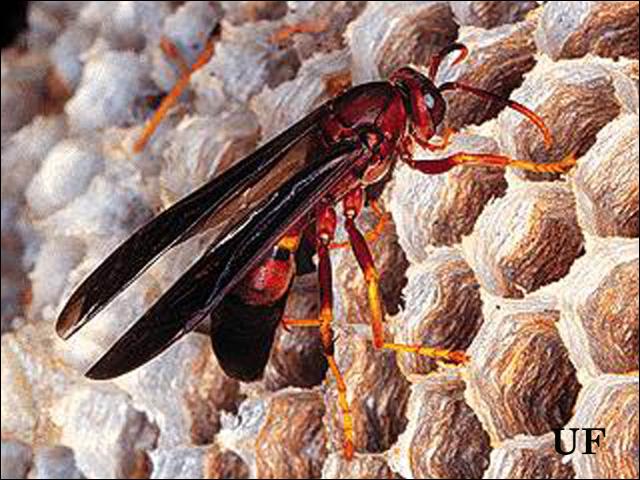
by Larry Williams | Aug 4, 2014
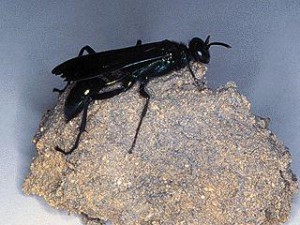
Mud dauber, Photo Credit: UF/IFAS Extension
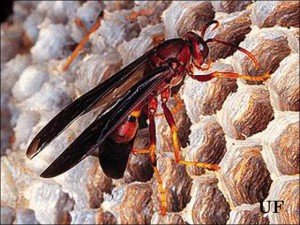
Paper wasp, Photo Credit: UF/IFAS Extension
I respect the fact that wasps can sting when threatened or disturbed. But I also respect the fact that they are beneficial.
Every time I’ve been stung by wasps, I either accidentally disturbed a nest that I didn’t know was there or I intentionally disturbed the nest and paid the price.
Paper wasps are common in Florida. They frequently construct and attach their paper-like nests to building eaves or the ceilings of porches. The adults seek out caterpillars, which they sting and paralyze. They then take the caterpillars back to their nest and place them in individual cells as food for the developing larvae.
I’ve witnessed the paper wasp as it stings and carries away a caterpillar from my vegetable garden. They are busy insects and are doing us gardeners a favor by reducing the population of caterpillars in our landscapes and gardens.
There are other beneficial wasps in Florida. Mud daubers, for example, build their mud-like nests on the sides of buildings close to human activity.
The mud dauber is not as aggressive as the paper wasp. It rarely stings people. It stings and paralyzes spiders. The mud dauber lays an egg on each paralyzed spider and seals it inside a chamber in its earthen nest. Upon hatching, the wasp larva feeds on the body of the spider. An emergence hole is made as the young wasp leaves the mud nest.
It may not be wise to tolerate all wasp species living in close proximity to your home. Even though yellow jackets, a type of wasp, could be considered beneficial, they are too aggressive and too likely to repeatedly sting to have as close neighbors. I also would be concerned with any type of wasp or bee nest existing in close proximity to individuals with a known allergy to insect stings.
Just because an insect has the ability to sting, it’s not all bad. Wasps can serve a beneficial purpose. But you’ll have to decide for yourself how close to you they can build their nests. The front porch may be too close.








